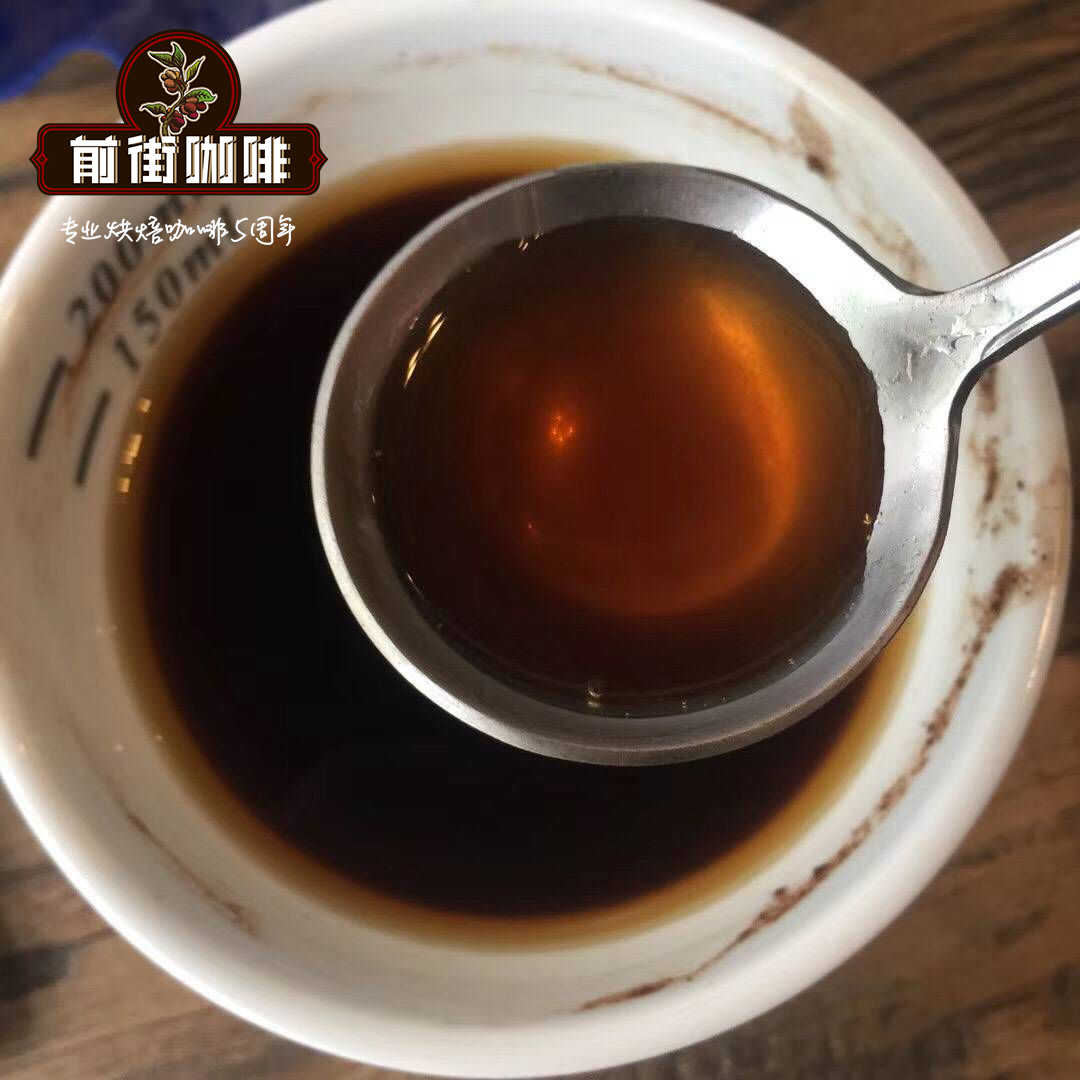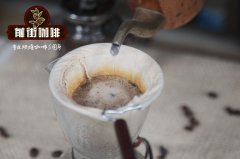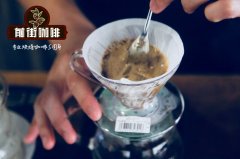Introduction to wet planing of coffee beans. Characteristics of wet planing of coffee beans. Is the coffee good?

Professional coffee knowledge exchange more coffee bean information please follow the coffee workshop (Wechat official account cafe_style)
Today, the editor will introduce to you a method of treatment that we have not heard of very often.
● wet planing (Giling Basah)
This is a coffee treatment method exclusive to Indonesia and two or three surrounding coffee-producing countries. Giling Basah is Indonesian, literally translated as "scraping off the hard shell under wet conditions". It also has another English name, Wet Hulling.
The earliest translation of this word in the Chinese coffee circle appeared in the book "Fine Coffee" written by teacher Han Huaizong, an old urchin of coffee in Taiwan. I thought that teacher Han's translation of "wet planing" was the best understanding of this method. Other misnames, such as the most typical "semi-washed Semi-Washed", confuse several coffee treatments, so that a group of coffee people's concept of wet planing is almost zero, sadly.
Wet planing is no less important to the global coffee industry than honey treatment. If you love coffee, you must have drunk the must-drink "manning" and it is treated in this way. It can even be said that most Arabica coffee in Sumatra and Sulawesi is wet planed. Indonesia is the fourth largest coffee producer in the world, according to statistics from the international coffee organization ICO in 2014. A treatment that contributes so much to global coffee production must be worthy of our study and analysis.
Why does ● use wet planing?
Because of the unique climate of tropical rain forest in Indonesia, the drying conditions of coffee beans are relatively harsh, and the drying rate of washing method is too slow, which may lead to the failure of post-production. So the inner pericarp (shell) is dried to a certain extent, and the raw coffee beans are directly exposed to the environment for drying, which can effectively shorten the drying time. This unique treatment is called wet planing because the endocarp (shell) is still wet when it is removed. Also because of the short fermentation and drying time, Indonesian coffee has low acidity and has its unique herbal flavor and personality. To understand the reasons for using the wet planing method, let's take a look at the treatment steps of the wet planing method.
Steps
● floating Coffee Fruit
Whether on small coffee farms or slightly larger coffee farms, all coffee in Indonesia is picked by hand. After picking, it is customary to soak in water to see the rough screening of ups and downs: leave the sunken coffee fruit behind, and the sundries floating on the surface and the green fruit are screened out.
● is a coffee fruit farmer scraping the peel with a machine.
Ripe red fruit is now peeled in a peeling machine. Unlike the water washing method, the wet planing method uses smaller peeling machines, which are so small that almost every coffee farmer can get one per person, so the "peeling" phase is almost entirely done at the farm level.
Next, ferment. The fermentation in the water washing method is to soak the peeled pectin coffee beans in the fermentation tank to take advantage of the ability of bacteria to remove pectin. The process lasts about 24-48 hours, and the water quality in the soaking pool is about the same as the quality of the beans. Wet planing fermentation is slightly different. It takes only 12 hours, uses very little water, and is often carried out in smaller containers, such as plastic pots or even plastic bags. After this brief fermentation, most of the pectin adhered to the bean shell can be easily washed off, leaving a small amount of pectin left on the bean shell. This step is also done at the coffee farm level.
Coffee farmers bag the wet sticky coffee with shell beans and sell it to others at the farmers' market where they meet once a week, often to buyers at processing stations. The purchasing unit is calculated by volume, and there are pre-measured special buckets, one liter or two liters per barrel, and pay coffee farmers at the price of XX yuan per liter of coffee beans. Buyers often pay by stages by observing the amount of residual pectin adhered to the bean shell. Those with more residues are cheap; those with less residues are expensive. The picture below is a dedicated one-liter scalar barrel "a litera can".
One liter scalar barrel for ●
After a lot of shell beans are collected by the treatment station, the undried shell beans (35% murmur45% water content) are sent directly to the shell machine, scraping off the bean shell and the pectin attached to the shell. This is called "wet plane". This step is different from all other treatments, no matter washing, sun or honey treatment, all is to dry the shelled beans (11% water content) and then "dry" to remove the shells.
A special shelling machine for ● wet planing
The wet planing method is also exquisite. The picture above is a special shelling machine for the Indonesian wet planing method. In terms of light size, it is three times the size of a water-washed sheller. What is more important than size is the nature of the grinding core. The picture below is a wet-shaved raw bean that has just taken off its shell, and its humidity is very high.
Raw beans by wet planing method after removing the shell from ●
We take the picture of the cross section of the shell bean which is not yet dry and has a very high water content by wet planing (as shown below). As you can see, it is obvious that the wet-planed bean shell is still soft at this time, while the water-washed bean shell has become crisp and dry after the baptism of the hot sun. In the drying process of washing method, the volume of raw beans decreased relatively after water loss, and there was an obvious interstitial layer between raw beans and shell, but there was no obvious spacer inside the shell beans after the same experience of wet planing, and the beans were very bulging. The two points described above make it more difficult to remove the bean shell in the wet planing method, and there are a lot of broken beans caused by severe friction in the wet planing method.
Cross section of shelled bean with extremely high water content before drying by ● wet planing method
At this time, the naked raw beans, which are still high in water content, are laid flat on the cement floor covered with straw mats or plastic skins to dry. Although there is no perishable organic matter such as pectin on the bean surface, coffee workers should pay attention to turning the beans from time to time. After all, the high humidity is there, and the exposed raw beans are very fragile, and covering them will rot.
Because there is no "tightness" of shell beans, the drying of wet planing is faster in theory. This is not the case. People in the coffee industry call the drying process in Sumatra a "nightmare". Sumatra, Indonesia is really one of the few coffee producing areas with a very humid climate. According to a coffee maker who has visited the Indonesian producing areas, "you can bask for up to four hours a day, carry it out in the morning and bring it back in the afternoon during heavy rain." Some coffee processors with a few pennies build greenhouses! Drying in the shed is probably more cost-effective than carrying it out and in.
● is a coffee farmer who turns coffee and raw beans in the greenhouse.
The wet weather also brought great trouble to coffee picking. In countries that have a clear and stable weather distribution, such as Central America, coffee pickers brush the fields an average of three times and can pick all the coffee fruits. For Sumatra, which has no idea what the weather is distributed, coffee pickers need to go to the fields to pick fruit countless times during the whole six months when the coffee fruit is ripe. Because coffee trees blossom and bear fruit according to the weather!
In such a severe environment, it takes about half a month for raw beans to dry, depending on luck. Because there is no shell, and the freshly shelled raw beans are moist and warm, and Indonesians do not need a net bed to dry, raw beans can accept the influence of many enzymes and microbes from the outside world, especially on the ground. Perhaps because of these factors in the drying stage, Sumatran coffee generally has a "earthy" flavor. The exposed raw beans are made in the sun, giving the wet planing method a common feature: the green color of raw beans in the forest.
The Flavor of ● Wet planing Coffee beans
Having understood the whole process, I ventured to talk to you again about its flavor. We generally think that wet shaved beans have the smell of soil, tobacco and chocolate, and the sour taste is called "low acid", which is very dull. Low acid comes from the fermentation process with shorter and weaker effect and the longer drying time. As for the "earthy taste" of wet shaved beans, there are different opinions. Some people say that this is related to the beans selected in the wet planing-related producing areas (Tim & Kadim: with Rob lineage), some people say that this is the result of the organic interaction between raw beans and the outside world (Peter Giuliano), and some even say that it is because there are too many defective beans!
Defective beans in ● wet planing coffee beans
First of all, there must be some natural defects in the coffee fruit, and another defect contributor is the shelling part, the corrosion of the wet shell beans during transportation, the damage of sunlight and moisture to the naked raw beans, and one point, the uneven drying speed brought by irregular weather also reduces the flavor.
Although the defect rate of Indonesian wet planing coffee beans is very high, we should also have confidence. In recent years, the Indonesian boutique coffee association SCAI has been established, and the quality supervision on the coffee production chain has also been strengthened. Some producing areas and estates have even introduced part of the washing mechanism, and some producing areas have begun to embark on the characteristic wet planing road of high quality and high supervision. In any case, I am still optimistic about the development of coffee in Sumatra, Indonesia. I don't want such a big and important country to carry on with unknown baggage. I believe it still has a lot of room for improvement.
Qianjie coffee: Guangzhou bakery, the store is small but a variety of beans, you can find a variety of unknown beans, but also provide online store services. Https://shop104210103.taobao.com
Important Notice :
前街咖啡 FrontStreet Coffee has moved to new addredd:
FrontStreet Coffee Address: 315,Donghua East Road,GuangZhou
Tel:020 38364473
- Prev

Why do Indonesian coffee beans need to be wet planed? How does the flavor of wet planed coffee beans
Professional coffee knowledge exchange More coffee bean information Please pay attention to coffee workshop (Weixin Official Accounts cafe_style) Do you really understand the meaning of wet planing method? Indonesia is a country where humidity ranges from 70% to 90% year-round, typhoons are common in some areas and rainfall exceeds 2000 mm per year. Why is Indonesia producing coffee defective? and how nature gives them
- Next

The whole process of coffee bean wet planing method _ Sumatra Mantenin coffee bean wet planing method
Professional coffee knowledge exchange more coffee bean information please pay attention to the coffee workshop (Wechat official account cafe_style) wet planing processing of coffee beans is a tradition of Indonesian Sumatran coffee, according to the president of the Indonesian Fine Coffee Association (SCAI) said Semi-washed Wet hulled, here its specific steps are as follows: ● first step: harvest 3 to 3 per year
Related
- What is the meaning of lactic acid fermentation with coffee bean treatment?
- How to judge the state of foam by sound?
- How does the latte pull out the unicorn pattern? Come to get for a little trick to improve the flower pull!
- Will flower pulling affect the taste of the latte?
- Do you know the history of coffee?
- The difference between honey treatment and sun washing what is raisin honey treatment?
- What kind of milk can a novice use to make coffee foam to keep the foam longer? The correct method and skills of milking tutorial sharing
- Why do washed coffee beans taste sour? Flavor characteristics of washed Coffee
- Introduction to the skill of how to practice the size and height of water injection around the circle of hand-brewed coffee
- How do beginners practice coffee flower drawing from scratch?

